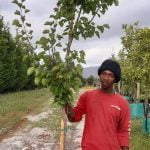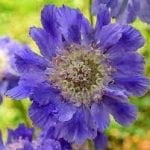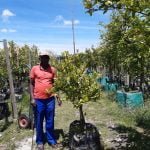Showing 2269–2280 of 2562 resultsSorted by popularity
-

-

Almond Tree (Texas Mission) 70lt
R2,450.00Add to cartAlmond Tree (Texas Mission) 70lt
Approx 2.5m tall
-
Sale!

Asplenium Antiquum Hurricane 19cm pot
All Indoor Plants, All Plants, Indoor Plants On Sale, Other Indoor Plants, Semi Shade Plants, Shade PlantsOriginal price was: R225.00.R139.99Current price is: R139.99.Add to cartAsplenium Antiquum Hurricane 19cm pot
Common Name: Hurricane Fern, Birds Nest Hurricane Fern -
Sale!

Scabiosa Fama Deep Blue 15cm Pot
Original price was: R110.00.R89.99Current price is: R89.99.Add to cartScabiosa Fama Deep Blue 15cm Pot
Full Sun
Afternoon Sun
Wind Tolerant
Low Watering
Evergreen
Indigenous -
Sale!

Alternanthera Purple Prince 12cm Pot
Original price was: R75.00.R49.99Current price is: R49.99.Add to cartAlternanthera Purple Prince 12cm Pot
Full Sun
Semi Shade
Low Watering
Easy to grow
Groundcover -

-

-
Sale!

Westringia Fruticosa 10lt white
All Plants, Full Sun Plants, Hedging Plants, Indigenous Plants, Outdoor Plants On Sale, Semi Shade Plants, Small PlantsOriginal price was: R225.00.R185.00Current price is: R185.00.Add to cartWestringia Fruticosa 10lt white
Full Sun
Semi Shade
Wind Tolerant
Low Watering
EvergreenFast-growing shrub up to 1.5m in height with fine, grey-green leaves and flowers in Spring and Summer. Excellent as a low lying hedge and suitable for coastal gardens.
-
Sale!

Westringia Fruticosa 10lt Blue
All Plants, Full Sun Plants, Hedging Plants, Indigenous Plants, Outdoor Plants On Sale, Semi Shade Plants, Small PlantsOriginal price was: R225.00.R185.00Current price is: R185.00.Add to cartWestringia Fruticosa 10lt Blue
Full Sun
Semi Shade
Wind Tolerant
Low Watering
EvergreenFast-growing shrub up to 1.5m in height with fine, grey-green leaves and flowers in Spring and Summer. Excellent as a low lying hedge and suitable for coastal gardens.
-

Trichilia Emetica 19cm Pot
R125.00Add to cartTrichilia Emetica 19cm Pot
Common Name: Natal Mohogany -

-

Carissa Storm 17cm Pot
R99.99Add to cartCarissa Storm 17cm Pot
Full Sun
Semi Shade
Evergreen
Hedging Plant
Medium watering
